Tuesday, 18 April 2023
Opening Keynote
“Beyond NextGen”

Paul Fontaine, Acting Assistant Administrator for NextGen, FAA
Paul Fontaine is the assistant administrator for NextGen (acting) and is responsible for championing the evolution of the National Airspace System (NAS). He provides strategic direction and executive oversight to more than 800 federal employees in the Office of NextGen (ANG) and is responsible for implementing the air transportation system modernization, executing the aviation research portfolio, and delivering results to support the overall advancement of aviation. Mr. Fontaine has experience harmonizing the implementation of aviation technologies with stakeholder priorities and ensuring risks are collaboratively addressed to facilitate delivery of Next Generation Air Transportation System (NextGen) capabilities and benefits.
Previously, Mr. Fontaine was the director of ANG Portfolio Management & Technology Development. He led the FAA Enterprise Planning effort in collaboration with aviation stakeholders, identified strategies, developed integrated solutions, coordinated investments to evolve and sustain a world class aviation system, and established NextGen integration goals, strategies, budgets, and priorities.
Mr. Fontaine was also responsible for the formulation, management, and coordination of the agency’s research and advanced technology development program in human factors, communications, navigation, surveillance, and air traffic management.
As the former manager of the Safe Flight 21 Program, his work led to the current nationwide deployment of the Automatic Dependent Surveillance – Broadcast (ADS-B) program.
Mr. Fontaine has more than 30 years of FAA and Department of Defense program management experience. He earned his commission as a Distinguished Graduate of the Air Force Reserve Officer Training Corps program. He holds an MBA in finance from Marymount University and a Bachelor of Science in managerial economics from Rhode Island College.
Plenary I: ICNS Accelerating Operational Change – Challenges & Opportunities
Co-chairs
Paul Bosman, Head of Infrastructure Division, Network Manager Directorate, EUROCONTROL
Paul Bosman has been with EUROCONTROLfor nearly 30 years, working in many different technical and managerial positions in different locations. He is currently the head of the Network Manager – Infrastructure Division. He is responsible for planning, deploying, and monitoring European infrastructure and aiming to digitize the SES European Sky through activities such as CNS, information management, AI and overall resilience (cyber, interference), as well managing major pan-European common services such as ARTAS/SDDS/SASS-C, EAD, NewPENS and air-ground datalink common procurement.
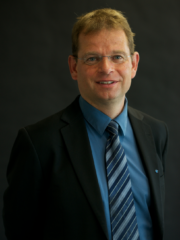
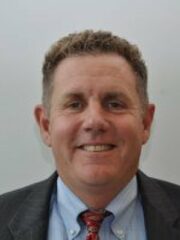
Dave Knorr, Division Manager, NextGen Systems Analysis, FAA
Mr. Knorr has more than 30 years’ experience with the FAA. He is currently the division manager for NextGen Systems Analysis and Modeling. His organization is responsible for developing a post operational assessment of key NextGen capabilities, NextGen enterprise level shortfalls and benefit assessments, and special studies related to aircraft equipage and ATM. Mr. Knorr also co-leads the NextGen advisory committee’s Joint Analysis Team (JAT) charged with reaching FAA/industry agreement on the value NextGen implementations at key sites.
Mr. Knorr’s group evaluates potential benefits of new capabilities supporting Trajectory-based Operations through historical data analysis and simulations. His division is one of FAA’s biggest users of ATO’s large vast trove of post operational data.
Before working in the FAA’s NextGen organization, he served as the FAA senior representative in Paris where the portfolio included coordinating international aviation relations with more than 20 European and 3 North African States. Mr. Knorr managed a broad spectrum of issues including agreements on commercial space, safety of exported aviation goods, technical training, air space security, environment, pilot violations, certifications, as well as managing FAA Executive visits to Europe.
Panelists
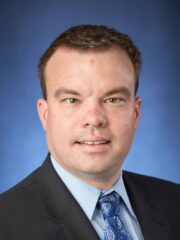
Chris Collings, Director of Business Development for Air Traffic Management Technology, L3Harris, “Operational Benefits of NextGen Data Comm”
Chris Collings is director of Air Traffic Management Business Development for the Mission Networks Sector of L3Harris Technologies. Mission Networks specializes in managed networks, surveillance, and air traffic management systems for the Federal Aviation Administration and global air navigation service providers. Mission Networks reports into the Space and Airborne Systems Segment of L3Harris.
Collings assumed the position of director business development for Mission Networks Global Air Traffic Management portfolio including airground communications, networks, surveillance, and information management. Collings continues to be responsible for the customer and industry engagement on the FAA’s Data Communications program. Previously, he served as program manager supporting multiple projects within L3Harris’ portfolio of FAA programs.
Collings is a subject matter expert in Controller Pilot Data Link Communications (CDPLC) having supported projects in this technology since joining L3Harris in 2006. He has held various technical and management roles including software engineer, systems engineer, program manager, operations manager, and business development director.

Didier Delibes, Head of ATM Deployment, Airbus, “The Business Case Challenge for the OEM”
Didier Delibes has a background of engineer in automatics & electrotechnics. He started his career in the Airbus design office to work on auto flight control system, where he eventually led their development on the A330/A340 program. He then moved to the Airbus Office of Airworthiness where he led the avionics certification for various Airbus programs including the A400M and A380. He was then qualified as an Airbus aircraft multi-systems architect, and he is now working in the Airbus multi-program-project & air traffic management program. His focus is on SESAR and NextGen ATM modernization programs, the worldwide harmonization, and the Airbus group ATM/UTM strategy. Didier is also member of the ICCAIA CSN/ATM committee for the ICAO affairs, the SESAR ATM Master Plan Committee, the “Single European Sky” Industry Consultation Body, and ATM committee of the ASD (Aerospace, Security and Defence Industries Association of Europe).
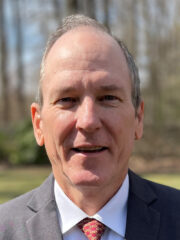
Dr. Martin Durbin, Operations Research Analyst, FAA, “Measured Benefits and Improvement Opportunities for CNS”
Dr. Martin Durbin has been with the FAA for 14 years. He is currently the manager of the Operations Performance Assessment Branch in the Office of NEXTGEN. His organization is responsible for assessing the potential operational impact of NextGen technologies and procedures. This work investigates large amounts of historical data to assess operational shortfalls that may be addressed by future implementations. His branch also plays a major role in post-operational analyses of NAS implementations. Many of these analyses support the Joint Analysis Team, such as escape routes from Northeast Corridor airports, RNP benefits at Denver, and the Dallas Metroplex re-design.
Prior to working at the FAA, Dr. Durbin was the technical director and co-founder of Decisive Analytics Corporation. In this position, Dr. Durbin led the development of real-time scheduling software for multiple applications, including teacher-to-web session assignments for Rosetta Stone, satellite resource scheduling, and bus/driver/route combinations for Walt Disney World. Dr. Durbin also led the development of the first combinatorial auction solver for the Federal Communications Commission spectrum auctions.
Dr. Durbin holds a Bachelor of Science in engineering-physics with a specialization in computer science from Murray State University, and both a Master of Science in operations research and a doctorate in information technology from George Mason University.
Plenary II: Advanced Air Mobility
Chair
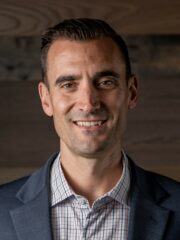
Brandon Suarez, Vice President of UAS Integration, Reliable Robotics
At Reliable Robotics, Brandon leads the development of technical standards and global aviation policy for the company. He is focused on defining key aspects of the development roadmap, including airspace integration and international operational approval, and supports product strategy plans and future aircraft programs.
Prior to joining Reliable, Suarez was the technical director for UAS Civil Airspace Integration at General Atomics Aeronautical Systems, Inc. where he led the company’s efforts to safely integrate remotely piloted aircraft systems (RPAS) into domestic, foreign, and international airspace. He also led a collaborative team of experts from the FAA, NASA, and several industry partners to bring together the technology needed for a Detect and Avoid (DAA) system on a Predator B RPAS.
Suarez is deeply involved in the aviation community. He serves as a co-chair of the Aerospace Industry Association’s Advanced Air Mobility Subcommittee bringing together diverse segments of the industry to advocate for common policies. He is an advisor to the International Civil Aviation Organization (ICAO), working to make RPAS a normal part of the global aviation ecosystem. He is a c-chair of RTCA Special Committee 228, which has developed FAA-recognized standards for DAA systems and UAS datalinks, two critical enabling technologies. He is also active in several NASA research activities seeking to advance future aviation concepts.
Suarez earned a Bachelor of Science and a Master of Science in aerospace engineering from the Massachusetts Institute of Technology. He is also an instrument-rated commercial pilot.
Panelists
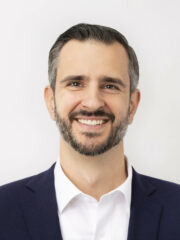
Fabrice Kunzi, COO, SkyGrid, “The Role of Third Party Services Providers in AAM”
Fabrice Kunzi is the chief operating officer of SkyGrid, a Boeing and SparkCognition Joint Venture. SkyGrid enables the operation of remotely piloted aircraft by the providing third party services needed to maintain the safety of a given flight. Prior to his role as COO, Fabrice served as the chief engineer for GA-ASI’s Detect and Avoid (DAA) system, leading the transition from prototype to product and operational fielding. Notably, Fabrice currently serves on RTCA, ICAO, EUROCAE and NATO industry committees, enabling the standardization of key systems required to operate remotely piloted aircraft.
He earned his Bachelor of Science in mechanical engineering from the University of North Dakota and holds both master’s and doctorate degrees in aeronautical engineering from the Massachusetts Institute of Technology (MIT). He also holds an FAA commercial pilot’s license with an IFR and multi-engine rating, as well as a Swiss private pilot’s license.
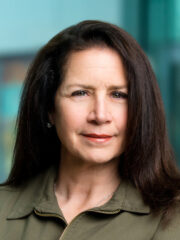
Tamara Casey, President, Aura Network Systems, “Perspectives of a C2 Link Communication Service Provider”
After cofounding AURA and serving as its president for more than three years, Tamara serves in the same capacity for the company’s subsidiary, AURA Ventures, where she leads efforts to identify, develop, and implement strategic opportunities that advance AURA’s mission. During her more than 35 years of experience in telecommunications and technology, she has been intricately involved in the development of standards designed to safely integrate UAS into the NAS.
As the granddaughter of a distinguished World War II veteran/U.S. Air Force Lt. Colonel, Tamara has been passionate about aviation her entire life. A licensed, multi-engine rated pilot, she has been intricately involved in the development of standards designed to safely integrate uncrewed aircraft systems (UAS) into the National Airspace System (NAS). She served on the RTCA Drone Advisory Committee to help develop minimum operational performance standards for C2 data links utilizing aviation-allocated spectrum resources. As CTO for Ligado Networks, she led successful demonstrations of control and non-payload communications (CNPC) capabilities for UAS and was also actively involved in supporting the evolving communications needs of the Helicopter Emergency Medical Services (HEMS) community and other mission-critical infrastructure customers.
Tamara’s experience as a technology strategy consultant to numerous private equity firms and telecom giants provides cutting-edge insights to the innovation and capital that can be harnessed for the execution of AURA’s vision. She holds an executive leadership certificate from Georgetown University’s McDonough School of Business and studied media communications at Laney College.
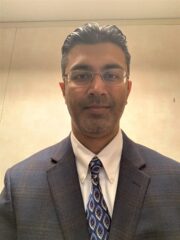
Usmaan Javed, RPAS Technical Officer, Air Navigation Bureau (ICAO), “ICAO’s Role in Global Harmonization of AAM”
Usmaan Javed currently works as a technical officer at ICAO in the RPAS group. He will also be a part of the Advanced Air Mobility Study Group, that will debut next month at ICAO. At ICAO, Usmaan serves as the primary focal point for airworthiness, C2 link, and detect and avoid (DAA) aspects of RPAS vehicles.
Previously, he worked at the FAA as an aerospace engineer, engaged in the flight test and certification of aircraft, avionics, flight data recorders, UAS/RPAS, eVTOL, as well as providing technical assistance for all aspects of Boeing 767 and Boeing 777 aircrafts. Usmaan serves on various RTCA, Eurocae, and ICAO technical committees, enabling the development and operation of both piloted, and remotely piloted aircraft. He is also a certified accident investigator and holds a private pilot’s license.
Sponsors and Exhibitors Reception
Evening Keynote
“The Promise and Perils of AI and Autonomy in Aviation”
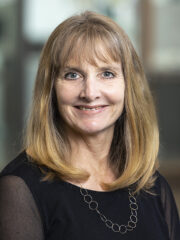
Dr. Missy Cummings, George Mason University
Dr. Mary (Missy) Cummings is a professor in the George Mason University College of Engineering and Computing and is the director of the Mason Autonomy and Robotics Center (MARC). She is an American Institute of Aeronautics and Astronautics (AIAA) Fellow, and recently served as the senior safety advisor to the National Highway Traffic Safety Administration. Her research interests include the application of artificial intelligence in safety-critical systems, assured autonomy, human-systems engineering, and the ethical and social impact of technology.
A naval officer and military pilot from 1988-1999, Dr. Cummings was one of the U.S. Navy’s first female fighter pilots. She received a Bachelor of Science in mathematics from the U.S. Naval Academy in 1988, a Master of Science in space systems engineering from the Naval Postgraduate School in 1994, and her doctorate in systems engineering from the University of Virginia in 2004.

